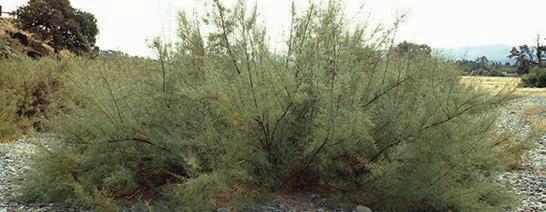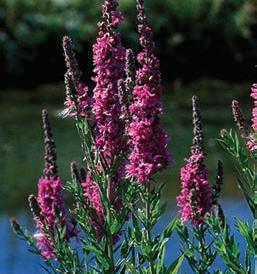
1 minute read
AQUATIC NUISANCE SPECIES (ANS)
BIGHEAD CARP, SILVER CARP
Fertile Grass Carp

• Bighead and silver carp can be found in the Kansas, Missouri and Wakarusa rivers and their tributaries. Fish may not be transported live from these waters.

• These fish are highly adaptive, prolific spawners, and directly compete with other fish for food and space.
• Silver carp pose a physical danger to boaters because of their leaping ability.
SALTCEDAR (TAMARISK)

• Saltcedar is a small tree or shrub that produces pink flowers May through October and can be found in 49 Kansas counties.
• It forms dense monocultures and dramatically changes vegetation structure and animal species diversity.
• It accumulates salt in its tissues, which is later released, making soil unsuitable for many native plant species.
• Infestations of saltcedar can reduce or eliminate water flow in streams.
• Leaves, twigs, and seeds are extremely low in nutrients, and, as a result, very few insects or wildlife will use them.
• It is illegal to possess or import fertile grass carp.
KEEP THE WATER SAFE AND CLEAN FOR FUTURE FISHING Report dumping, pollution to the EPA at 1-800-223-0425
New Zealand Mud Snail
• The New Zealand mudsnail (NZMS) has not been reported in Kansas, but is considered a priority species because of the late 2004 introduction into Colorado.
• Mature New Zealand mudsnails average 5mm (2/10-inch) in length and have brown or black coneshaped shells with five whorls.
• NZMS disrupt the food chain by consuming algae in the stream and competing with native bottomdwelling invertebrates. A population crash of invertebrates can follow the introduction of NZMS, which reduces fish forage. With a decrease in food availability, fish populations may decline as well.
• Mudsnails are able to withstand desiccation, a variety of temperatures, and are small enough that many types of water users (anglers, swimmers, pets) could inadvertently transfer them. It takes only one snail to start an infestation.
Purple Loosestrife Eurasian Watermilfoil
• Eurasian watermilfoil forms dense mats on the water's surface.
• It reproduces by fragmentation, and plant fragments can be transported by boaters.
• It will shade out native vegetation and reduce oxygen levels during decomposition.
• Eurasian watermilfoil forms a dense canopy that hinders recreational activities.

• Purple loosestrife is established in several areas across Kansas.

• Loosestrife restricts native wetland plant species, including some federally endangered orchids, and reduces habitat for waterfowl.
• It is highly tolerant to disturbance and reproduces through the dispersal of thousands of tiny seeds.





